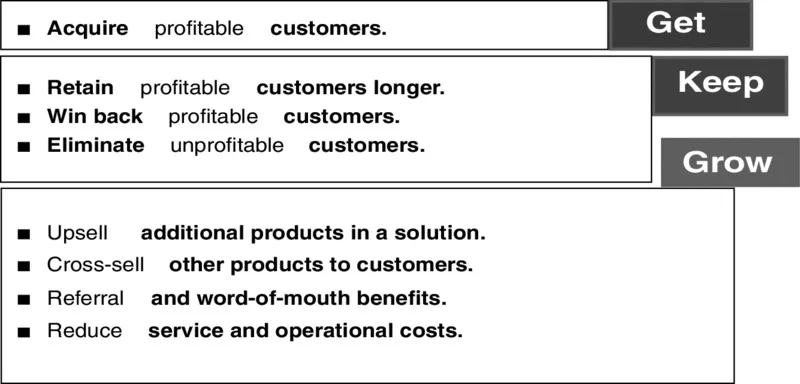Think about it: By definition, customers are every company’s source of revenue. No company will ever realize income from any other entity except the customers it has now and the customers it will have in the future. Brands don’t pay money. Products don’t. Sales regions don’t. Thus, in many ways, a firm’s most valuable financial asset is its customer base, and, given our new and unfolding technological capabilities to recognize, measure, and manage relationships with each of those customers individually, and to create and improve their experiences with our companies, a forward-thinking firm must focus on deliberately preserving and increasing the value of that customer base. Customer strategy is not a fleeting assignment for the marketing department; rather, it is an ongoing business imperative that requires the involvement of the entire enterprise. Organizations manage their customer experiences and relationships effectively in order to remain competitive. Technological advancements have enabled firms to manage customer relationships more efficiently and to create better customer experience, but technology has also empowered customers to inform themselves and one another and to demand much more from the companies they do business with. The goal of this book is not just to acquaint the reader with the techniques of managing customer experiences and relationships. The more ambitious goal of this book is to help the reader understand the essence of customer strategy and how to apply it to the task of managing a successful enterprise in the twenty-first century.
The dynamics of the customer-enterprise relationship have changed dramatically over time. Customers have always been at the heart of an enterprise’s long-term growth strategies, marketing and sales efforts, product development, labor and resource allocation, and overall profitability directives. Historically, enterprises have encouraged the active participation of a sampling of customers in the research and development of their products and services. But until recently, enterprises have been structured and managed around the products and services they create and sell. Driven by assembly-line technology, mass media, and mass distribution, which appeared at the beginning of the twentieth century, the Industrial Age was dominated by businesses that sought to mass-produce products and to gain a competitive advantage by manufacturing a product that was perceived by most customers as better than its closest competitor. Product innovation, therefore, was the important key to business success. To increase its overall market share, the twentieth-century enterprise would use mass marketing and mass advertising to reach the greatest number of potential customers.
As a result, most twentieth-century products and services eventually became highly commoditized. Branding emerged to offset this perception of being like all the other competitors; in fact, branding from its beginning was, in a way, an expensive substitute for relationships companies could not have with their newly blossomed masses of customers. Facilitated by lots and lots of mass-media advertising, brands have helped add value through familiarity, image, and trust. Historically, brands have played a critical role in helping customers distinguish what they deem to be the best products and services. A primary enterprise goal has been to improve brand awareness of products and services and to increase brand preference and brand loyalty among consumers. For many consumers, a brand name has traditionally testified to the trustworthiness or quality of a product or service. Today, though, more and more, customers say they value brands, but their opinions are based on their “relationship with the brand”—so brand reputation is actually becoming one and the same with customers’ experience with the brand, product, or company (including relationships).1 Indeed, consumers are often content as long as they can buy one brand of a consumer-packaged good that they know and respect.
For many years, enterprises depended on gaining the competitive advantage from the best brands. Brands have been untouchable, immutable, and inflexible parts of the twentieth-century mass-marketing era. But in the interactive era of the twenty-first century, enterprises are instead strategizing how to gain sustainable competitive advantage from “brands” that create the best customer experience, based on the information they gather about customers.
For many years, enterprises depended on gaining the competitive advantage from the best brands. Brands have been untouchable, immutable, and inflexible parts of the twentieth-century mass-marketing era. But in the interactive era of the twenty-first century, firms are instead strategizing how to gain sustainable competitive advantage from the information they gather about customers. As a result, enterprises are creating a two-way brand, one that thrives on customer information and interaction. The two-way brand, or branded relationship, transforms itself based on the ongoing dialogue between the enterprise and the customer. The branded relationship is “aware” of the customer (giving new meaning to the term brand awareness) and constantly changes to suit the needs of that particular individual. In current discussions, the focus is on ways to redefine the “brand reputation” as more customer oriented, using phrases such as “brand engagement with customer,” “brand relationship with customer,” and the customer’s “brand experience.” Add to this the transparency for brands and rampant ratings for products initiated by social media, and it’s clear why companies are realizing that what customers say about them is more important than what the companies say about themselves.

